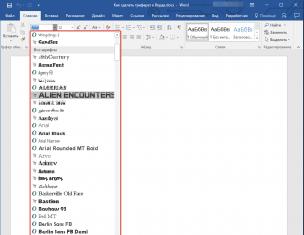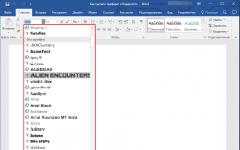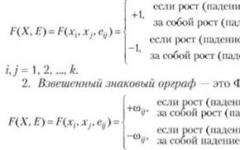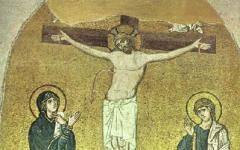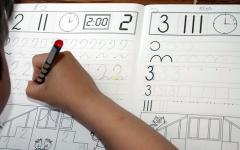The US educational system is much decentralized and schools vary greatly from state to state. There are three levels of subsidizing of education: federal, state and local. They subsidize 3-5 per cent on a federal level, around 20 per cent on a state level and 70-80 per cent on a local level.
There are 15,000 school districts which are different in size. A school district is governed by the Board of Education/School Board/School Council which is elected every two years by the residents of the school district. Members of school boards perform their responsibilities on a volunteer basis, that means they do not get any salaries. They are to define the policies for the administration of the school district. Teachers, in turn, decide about the program and approaches of teaching.
Every resident pays a school tax to the school district he/she lives in, no matter he/she has school children or not. School education in the United States is free and parents are free to choose a school for their children. But if parents send their child to a school of another school district they have to pay the sum equivalent to the school tax directly to the school the child goes to.
There are also a lot of private schools, mainly religious, and parents have to pay for them. The cost is $ 5,000 - $ 10,000 a year.
There is no home education in the United States. Each invalid is supposed to attend school. School provides all the necessary conditions for them to study.
The school system structure in the United States looks like this. Children start going to school at the age of five. First they go to eight-year elementary school and then to high school or if they go to five- or six-year elementary school, they then attend three- or four-year middle school, and then high school. Teenagers study at high school four years and graduate from it at the age of eighteen. Members of each grade in high school have special names:
A ninth grader is called a Freshman,
- a tenth grader - a Sophomore,
- an eleventh grader - a Junior,
- a twelfth grader - a Senior.
The completion of high school is called graduation. In order to graduate, students must accumulate a certain amount of credits during their four years at school. Credits are points given for every subject that is passed successfully. In addition to that, students must successfully complete specific subjects required by the state or local educational authorities, such as US history, English, mathematics and physical education. This may vary from state to state.
Over 60% of school graduates continue their education in two- or four-year colleges or universities. At least 10% of high school students are allowed to finish school at the age of 16.
A school year starts at the beginning of September or at the end of August and ends in late June or early July, just before the Independence Day, and is divided into three terms/trimesters or four quarters. School children have winter and spring breaks for two or three weeks and summer vacation for six up to eight weeks.
There is a great variety of Saturday, Sunday, vocational and other schools. The most popular one is summer school. It is for students who want to get a deeper knowledge in a particular subject, or to skip a year, or just fail their examinations. It lasts six weeks and parents have to pay for it.
Students go to school five days a week. They get to and from school by a school bus. A typical school day in America starts at 7.30 AM with the Pledge of Allegiance in which the US flag and the whole nation is glorified. Then follows the homeroom period during which a homeroom teacher calls the roll and the principal makes his/her announcements over the intercom. Every day students usually have seven periods which last 50-55, sometimes 45 minutes. In some schools there are four periods lasting 90 minutes. There are 2-5 minute passing between periods and a break of 30 minutes for lunch.
American schools today house a large number of students but making friends can be difficult, as the same group of students does not attend all the classes. In order to encourage meeting and knowing a broader population at school, special emphasis is placed on so-called extracurricular activities where interests, rather than academic ability, bring students together.
Extracurricular activities are the many club meetings, music or drama rehearsals, and sport practice sessions that take place in American high school in the afternoon after classes. These meetings are a very important part of high school life, since they are a link between different groups of students who are placed in various academic programs. Students who usually would not meet in the classroom get to know each other in areas of common interest. They give students the opportunity to further their specific interests in various fields and to spend their free time together.
Even though they are not mandatory, many students get involved in different extracurricular activities. Since students spend a lot of time participating in various activities, school becomes the center of social life for students. They not only go to school to study the material presented in class, but they also meet together to socialize and to pursue their interests.
Other important activities in American high school are sports teams. Most schools offer a variety of teams for both boys and girls. American football, basketball and base-ball are played in the majority of schools. In addition, one may find tennis, gymnastics, hockey, swimming, golf, volleyball, cross-country, and track and field teams, depending again on the size and financial resources of the school. Soccer is also growing in popularity.
Usually schools have varsity teams, which complete with other schools and which have very intensive training, and intramural teams, which play other teams within the school itself. In most schools, there is a great deal of competition between students to join the varsity team. There often are schools regulations that make it difficult for new students to join. On the intramural teams most students are welcome to participate.
In many schools girls have fewer possibilities than boys. Smaller schools may not have some of the above-mentioned teams for girls. But a special group of girls and boys play an important part at the football and basketball games. They are called cheerleaders and they lead the crowd in cheers for their team.
In addition to clubs and sports teams, one will find the Student Council and the class officer meetings. Students are elected by their school and classmates to represent them in these bodies and to organize activities for their school.
U.S. colleges and universities offer a vide variety of programs ranging from highly academic courses to very practical ones. Students can be educated not only for academic professions, but also for technical professions, such as mechanics, nursing, medical technology, computer technology and book-keeping.
In universities young people study four years to get bachelor"s degree. If one wants to get master"s degree he/she must study two years more and do a research work. If one has master"s degree, studies more, does a research work and passes an oral, comprehensive examination he/she gets doctor"s degree (PhD).
Moscow- Москва
Moscow is the capital of the Russian Federation. Our capital is situated in the western part of our country on the Moscow-river, in the center of the West-European flatland. This region is a very heavily populated and highly developed area.
Москва - столица Российской Федерации. Наша столица располагается в западной части нашей страны на Москве-реке, в центре западно-европейской равнины. Этот регион является очень густо заселенным и высокоразвитым.
The Moscow region has a so called continental climate. Moscow winters are long and cold. Summers are usually mild and rather short. In summer months downpours often occur.
Московская область демонстрирует так называемый континентальный климат. Московские зимы долгие и холодные. Летом обычно тепло, и оно достаточно короткое. Летом часто могут идти ливневые дожди.
The population of Moscow is employed predominantly in industry, research and science. The most important Moscow industrial sectors are engineering and metalwork (automobile industry, manufacturing of precision instruments, bearings and machine tools). To important activities belong also textile industry, chemical industry, manufacturing of consumer goods, construction and publishing trade. Our capital is also the headquarters of banking and insurance organizations.
Население Москвы занято преимущественно в области производства, исследований и науки. Наиболее важными секторами московской промышленности являются машиностроение и металлообработка (автомобильная промышленность, производство высокоточных приборов, подшипников и машинного оборудования = станков). К важным отраслям относятся также текстильная промышленность, химическая индустрия, производство товаров народного потребления, строительство и издательское дело. Наша столица также является штаб-квартирой банковских учреждений и страховых компаний.
There are many different rings in the layout of the modern Moscow. The modern Garden Ring and the modern Boulevard Ring repeat the line of previous fortifications. The center of Moscow is encircled by the Little Ring Railway. The Moscow Ring Road encircles practically the outer perimeter of the capital.
На карте современной Москвы много различных колец. Современное Садовое кольцо и современное Бульварное кольцо повторяют линию прежних фортификационных сооружений. Центр Москвы охвачен Малым кольцом Московской железной дороги. Московская Кольцевая автомобильная дорога охватывает столицу практически по внешнему периметру.
The Kremlin is the historical heart of our capital. The Moscow Kremlin has twenty towers and redbrick walls. The Kremlin is the residence of the Russian government. At the east wall of the Moscow Kremlin is the Red Square. It is the central square of Moscow. The Lenin Mausoleum, the Cathedral of Saint Basil the Blessed, the State Historical Museum and the Main Department store of Moscow are situated around the Red Square.
Кремль является историческим сердцем нашей столицы. Московский кремль имеет двадцать башен и стены из красного кирпича. Кремль является резиденцией российского правительства. У западной стены Кремля находится Красная площадь. Это центральная площадь Москвы. Мавзолей Ленина, Собор Василия Блаженного, Государственный исторический музей и Главный универмаг Москвы расположены вокруг Красной площади.
In the center of Moscow are represented buildings constructed from the fifteenth century up to the present day. There are many examples of different architectonic styles in the central part of the capital located within the Moscow Garden Ring.
В центре Москвы представлены здания, сооруженные начиная с пятнадцатого столетия и по сегодняшний день. В центральной части столицы, расположенной внутри Московского Садового кольца, имеется много примеров различных архитектурных стилей.
Beyond the Moscow Garden Ring are located railway stations, various factories, freight terminals and accommodation buildings. There are many large apartment buildings in the city. Moscow has a number of industrial satellite towns and big dormitory suburbs.
За пределами Московского Садового кольца расположены железнодорожные станции, разнообразные заводы и фабрики, складские терминалы и жилые здания. В городе имеется большое количество крупных многоквартирных домов. Москва имеет ряд промышленных городов-спутников и крупные пригородные жилые кварталы.
There are many educational institutions, libraries, museums, galleries, theatres and other cultural objects in Moscow. The Moscow State University, The State Academic Great Theatre (Bolshoy), the State Pushkin Museum and the State Tretyakov Gallery are world-famous global names.
В Москве много образовательных учреждений, библиотек, музеев, галерей, театров и других культурных объектов. Московский Государственный университет, Государственный Большой академический театр, Государственный Пушкинский музей и Государственная Третьяковская галерея - это названия, известные во всем мире.
Moscow has a well-developed traffic infrastructure and public system of transportation including busses, trolleybuses, streetcars, fixed-route taxis and subway. Moscow is the center of national railway network. Moscow is also a big river port and a center of the national airline network.
Москва имеет высокоразвитую транспортную инфраструктуру и систему общественного транспорта, включающую автобусы, троллейбусы, трамваи, маршрутные такси и метро. Москва является центром сети национальных железных дорог. Москва также представляет собой крупный речной порт и центр внутренних авиалиний.
Другие темы
Topic: Moscow – a capital of Russia
Тема: Москва – столица России
And the largest city of Russia. More than twelve million people live and work here. It has an interesting history and plays a great role in economics and politics of the world. It is an important touristic center and a huge transportation hub. Moscow can be also called a city of contrasts: different people live here, there can be found churches of different faiths, the busy districts are located near the sleeping areas.
Москва-это столица и крупнейший город России. Более двенадцати миллионов человек живут и работают здесь. Он имеет интересную историю и имеет большое значение в экономике и политике мира. Это важный туристический центр и огромный транспортный узел. Москву можно также назвать городом контрастов: здесь разные люди живут, там можно найти храмы разных конфессий, занятые районы расположены недалеко от спальных районов.
Moscow is situated in the center of , between the Oka and the Volga rivers. more than two thousand square kilometers, including the territory inside and out of the Moscow ring road. The Moscow River flows through the city together with its numerous tributaries. Some of them are hidden into collectors. There are also several lakes and ponds in Moscow.
Москва расположена в центре Восточно-Европейской равнины, в междуречье Оки и Волги. Ее размеры более чем две тысячи квадратных километров, включая территорию внутри и вне МКАД. Москва-река протекает через весь город вместе со своими многочисленными притоками. Некоторые из них спрятаны в коллекторы. Есть также несколько озер и прудов в Москве.
It has distinct seasons during the year. Winter season lasts for about four months. The temperature is from ten to twenty degrees below zero. The coldest month is February. Sometimes there when temperature decreases to 30 degrees below zero. Summer is warm. The periods of very hot weather and temperate weather conditions. The maximum rainfall takes place in summer, when conventional rains are added to frontal precipitations. Moscow has such a good position on the world’s map that it is practically free from natural disasters. However, hail, mild hurricanes and strong thunderstorms sometimes happen here.
Москва обладает умеренно континентальным климатом. Он обладает четко выраженными сезонами в течение года. Зимний сезон длится около четырех месяцев. Температура от десяти до двадцати градусов ниже нуля. Самый холодный месяц-февраль. Иногда наблюдаются сильные морозы, когда температура падает до 30 градусов ниже нуля. Лето теплое. Периоды очень жаркой погоды вменяются дождями и умеренными погодными условиями. Максимальное количество осадков происходит в летнее время, когда конвекционные дожди добавляются к фронтальным осадкам. Москва находится на такой хорошей позиции на карте мира, что она практически свободна от стихийных бедствий. Однако, град, не сильные ураганы и сильные грозы иногда бывают здесь.
Moscow is a green city. It has a lot of parks. National park Elk Island is among them. Moscow parks provide a great number of recreation zones that include places for swimming and sunbathing, facilities for sport activities and with children. Many species of animals and birds can be found there too. It is possible to feed squirrels, , see a rabbit or a fox.
Москва-это зеленый город. В нем много парков. Национальный парк Лосиный остров находится среди них. Московские парки предоставляют большое количество рекреационных зон, которые включают в себя места для купания и принятия солнечных ванн, комнаты для занятия спортом и развлечения для семей с детьми. Также там можно найти многие виды животных и птиц. Можно покормить белок, уток и голубей, увидеть зайца или лису.
The ecological situation in Moscow is far from ideal, especially in the center and its South Eastern parts. This situation is explained by the predominance of The Western winds that transfer air polluted by cars’ exhausts and plants’ emissions. The situation becomes more difficult in summer periods when asphalt is melting from the heat.
Экологическая ситуация в Москве далека от идеала, особенно в Центральной и Юго-Восточной частях. Такая ситуация объясняется преобладанием западных ветров, которые передают загрязненный от автомобильных выхлопов и выбросов заводов воздух. Ситуация становится сложнее в летние периоды, когда асфальт плавится от жары.
The city got its name from the name of the river on the banks of which it stands. means something wet and humid. The history of Moscow territory begins in the Stone Age. Archeological researches show that several tribes had their settlements here. is mentioned of the foundation of the city by Yuri Dolgorukiy, the prince of Yaroslavl. it became a center . It lost its status only in the times of , when the capital was moved to Saint Petersburg. has been a residence of Russian rulers since long ago. Nowadays, practically all the important , , are situated in Moscow.
Свое название город получил от названия реки, на берегах которой он стоит. В переводе с древнего языка “Москва” означает что-то мокрое и влажное. История территории Москвы начинается в каменном веке. Археологические исследования показывают, что некоторые племена имели свои поселения здесь. В сохранившихся русских летописях 1147 год упоминается как время основания города Юрием Долгоруким, князем Ярославля. В 14-15 веках он стал центром российской территории. Он потерял свое состояние только во времена Петра I, когда столица была перенесена в Санкт-Петербург. Московский Кремль был резиденцией русских правителей с давнего времени. В настоящее время, практически все важные политические объекты, кроме Конституционного Суда, находятся в Москве.
Moscow possesses a developed . There are nine railway stations that have passengers and freight trains, long distance and high speed to different destinations. Also there is a ring railroad that runs . Several airports with international functions . Being a “port of seven seas” Moscow has two river ports which allow ships to go through the Moscow canal to Volga and further. To move around Moscow, citizens use , which is considered to be one of the most beautiful in the world, buses, trolleybuses and tramways. Practically all the Muscovites use personal automobiles.


